- Products
- ProspectSQL/MQL list building with high levels of personalization, real-time data enrichment and prospect search
- Email FinderFind individual or bulk emails by entering the person & company name or domain
- Email VerifierVerify emails addresses individually, in bulk or through API, with 99% accuracy
- Clearout For SheetsVerify email addresses directly on Google Sheets with Clearout for sheets add-on
- ClearoutPhoneValidate phone numbers across 240+ countries in bulk, quick or real time validation Free Tools
- Disposable Email Checker
- Reverse LinkedIn Profile Lookup Tool
- Reverse Email Lookup Tool
- Email List Cleaner
- Resource
- Pricing
- Integrations
- Enterprise
- Login
Understanding and Blocking Disposable Email Addresses
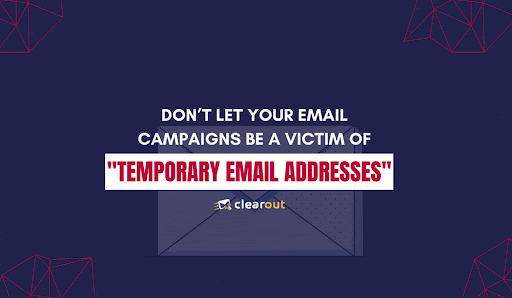
For a consumer, it is a way to fight back spam and bad opt-in protocols, for developers, it is a good tool to carry out multiple software tests before releasing it, but for the marketers, it is a threat to their sender reputation.
So in this blog, we will talk all about disposable/temporary emails, their pros & cons, and the best ways to manage or block them.
Table of Contents:
What Are Disposable Email Addresses?
It allows registered users to receive emails at a temporary email address, which they can use without revealing their identity or personal/business email address. This is useful when people want to keep their actual email address private and avoid spam or unwanted emails.
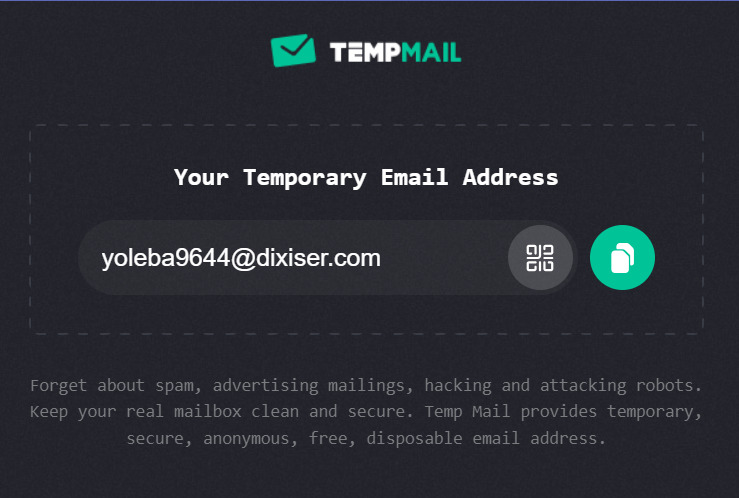
Types of Disposable/Temporary Email Addresses
2. Forwarding Account: These are created on a different domain than the user’s account. It automatically forwards all incoming emails to another email address. It’s hard to get accurate results on such accounts as the open or click data.
3. Throwaway Emails: These are generated on the fly and are typically only valid for a short period, such as 24 hours or one week. They are the most dangerous for marketers as any email sent to them will bounce as soon as it expires.
All these emails are low-quality email addresses and are usually used for signups when the users don’t value your brand much and/or want to take advantage of free service multiple times without revealing their identity.
Sending emails to any of these temporary emails will result in a high email bounce rate eventually. Thus, marketers need to use a good disposable email checker and clean email lists thoroughly before shooting out email campaigns.
Try our Disposable Email Checker
You've exceeded allowed limit, so create an account to get 100 FREE credits
[No Credit Card
Required]
Timeout occured.
Click here to try
again
Something went wrong. Please try later!!

Safe To Send | ? Based on best practices followed in the industry, Safe To Send flag will provide one of the 4 values to know the deliveriablity chances Yes - Valid mailbox addresses with guranteed deliveriablity of message thus help to keep sender reputation high % No - Invalid mailbox addresses can be safely removed, try sending message will bounce and degrade the sender reputation Risky - Contact these email addresses only when bounce rate is less than 5 % or when using own email sending service Unknown - Due to unavoidable reasons the status of the email cannot be determined, so retry before using them |
Status | ? What does Status value means? Valid - Secure, go ahead and send Invalid - Don't send, drop these emails Catch-all - Maybe, at your own risk Unknown - Don't send, verify later an hour to know the status |
Reason | |
Account | |
Domain | |
Disposable | |
Free Account | |
Role Account |
Risks of Sending Emails To Disposable Emails
Failing to verify email addresses that are collected can lead to a large number of disposables in your email lists, reducing data quality and leading to serious damage.
Hard Bounces
This can damage your sender reputation and make it more difficult for your emails to be delivered to legitimate recipients.
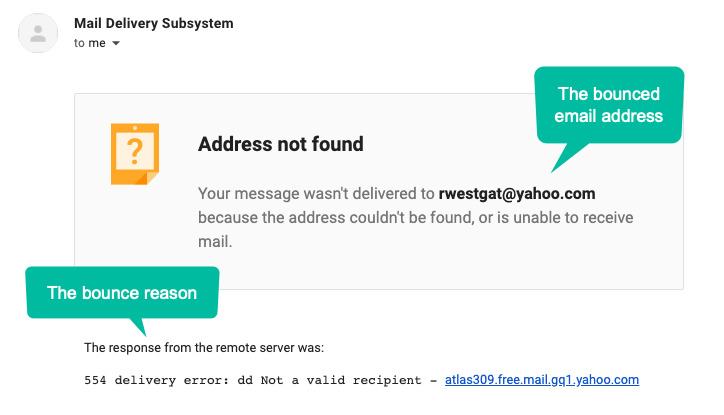
Lower Email Deliverability
So your campaign will give a high bounce and low deliverability rate and the ESP in use will charge you for email addresses that do not exist anymore. That’s a two-way loss!
Account Suspension
Multiple bounces, spam complaints, or unsubscribes can even force your ESP to suspend your account to meet the email protection standards.
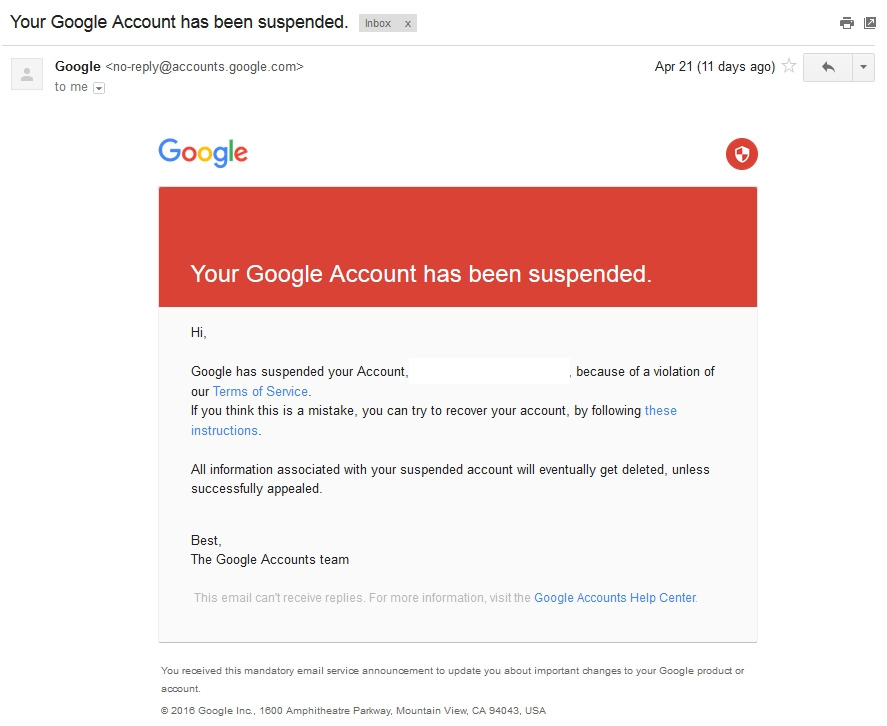
Lower ROI
The return on investment goes down twice the rate as the prospect is not reachable so any future sales are not possible and in addition, you are being charged for the same.
How To Identify & Block Disposable Email Addresses?
Here are different ways to block disposable emails:
1. Real-time Email Verification
This method ensures that no unwanted emails slide into your email lists, saving you time and money spent on throwaway emails, and boosting the quality of your email lists.

2. Bulk Email List Cleaning
You can simply use a bulk email verifier and upload your email lists there to identify all the invalid, risky, and temporary emails and remove them from your email lists.
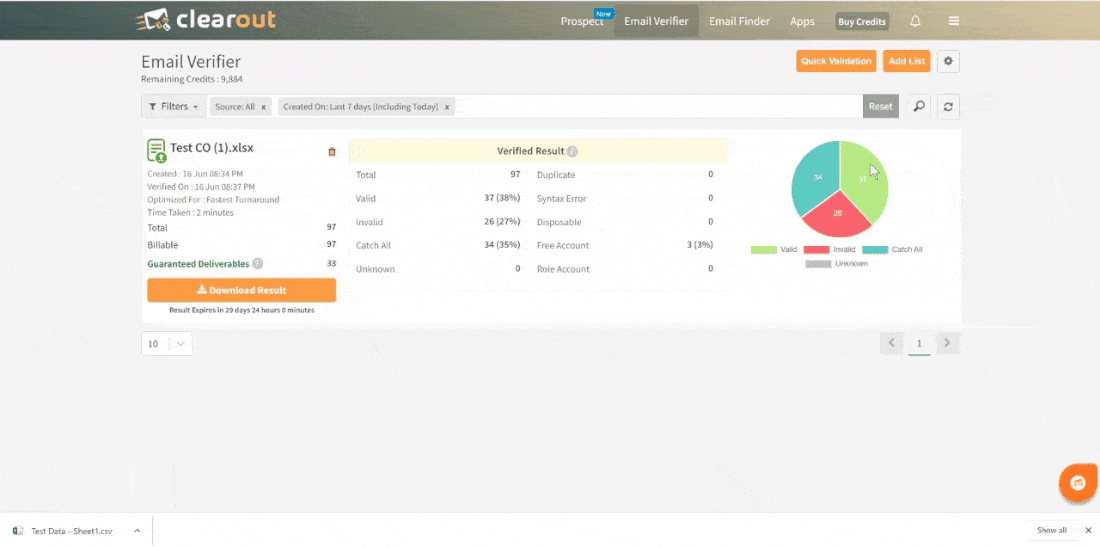
3. Using a Blocklist
Also if you want to double secure your forms from disposable emails or any unwanted email domains from entering your system you can add them to your email verifier tool blocklists after they are identified.
For example, Clearout lets you strengthen your security measures against any kind of disposable or risky email addresses by giving you the blocklist feature to stop all the unwanted email domains you list from signing up on your forms. Hence, no email from a listed domain will be able to sign up on your platform.
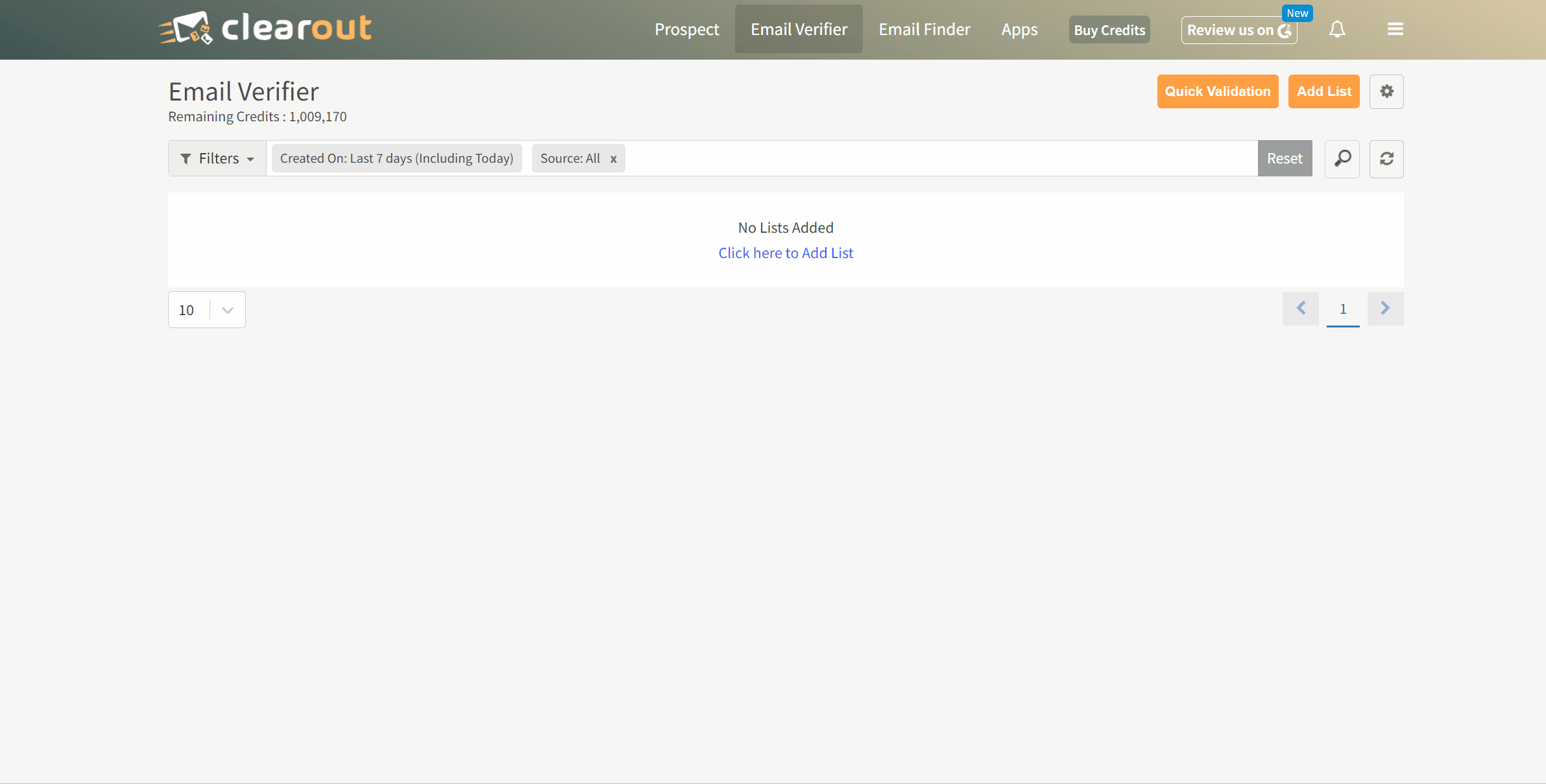
Using Clearout can drastically help you get rid of any temporary email address and boost your deliverability and engagement rate.
How To Reduce Disposable Email Sign-ups?
To avoid losing valuable leads and keep abusers away, you can also try:
Building More Trust
Let the prospects be aware of your privacy and data security policies to build up trust in you and your services. Consistency, and sharing user-generated content are some other ways to evolve trust.
Restrict Incentives
Some websites allow users to keep the throwaway email for more than 10 minutes even if they have the opt-in form. The best way would be to give the new users a follow-up email within 30 minutes or even the next day.
Someone will rarely keep the tab unrefreshed for 24 hours. This way you’re encouraging people to sign up with their primary email addresses.
Provide Value & Actual Solutions
To build up user engagement and trust you need to answer the question. By letting them know what they had been missing on not signing up, the users will think twice before closing the tab or using a temporary email.
Identify, Remove & STOP Temporary Email Addresses!
By diligently implementing a reliable and highly accurate email verification service like Clearout to address not only the issue of temporary emails but all types of bad email addresses, you can safeguard your database and email campaigns from potential abuse, improve the quality of your user data, and enhance the overall effectiveness of your digital initiatives.
Maintain Your Campaign’s Health With Clearout
Recent Posts
Best Zoho CRM Integrations for Sales & Marketing in 2025
Discover the top Zoho CRM integrations in 2025 categorized by use case. Explore how each tool's key ...
Sales Automation in 2025: The Guide to Close More Deals Faster
Struggling with manual sales workflows? Follow this guide to explore the sales automation use cases, ...
Top 6 Email Finder APIs in 2025 for All Use Cases
Looking for a reliable Email Finder API? Explore the top 6 email finder APIs of 2025—compare key fea ...
Top 10 Email Spam Checker Tools Tested & Reviewed (2025)
Check out the top 10 email spam checker tools to avoid junk folders. Compare features, ratings & use ...
How To Create a Lead Magnet That Converts in 2025
Looking for more leads? Read how to create a high-converting lead magnet in 2025 with step-by-step g ...
Prospecting ,Email Finder & Email Verification Service
Prospecting ,Email Finder & Email Verification Service
Expand your reach by discovering and verifying the ideal prospects.
Sign up & get 100 free credits | No Credit Card required


